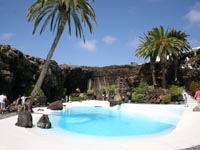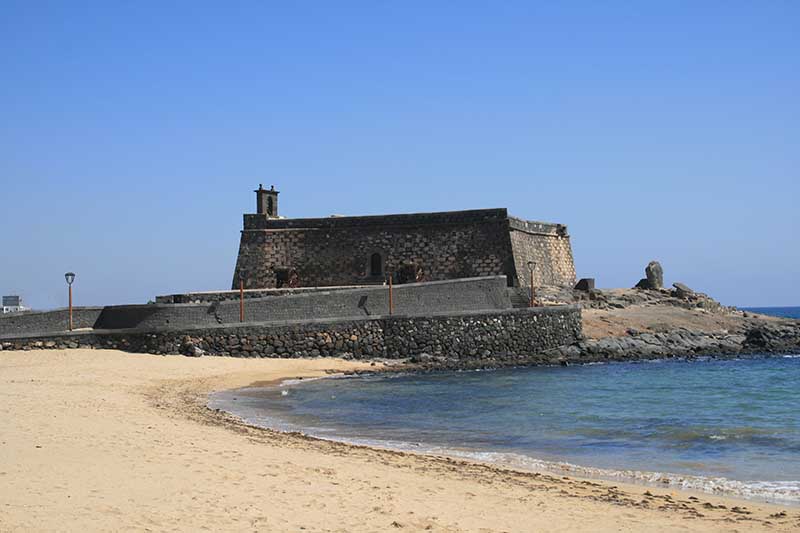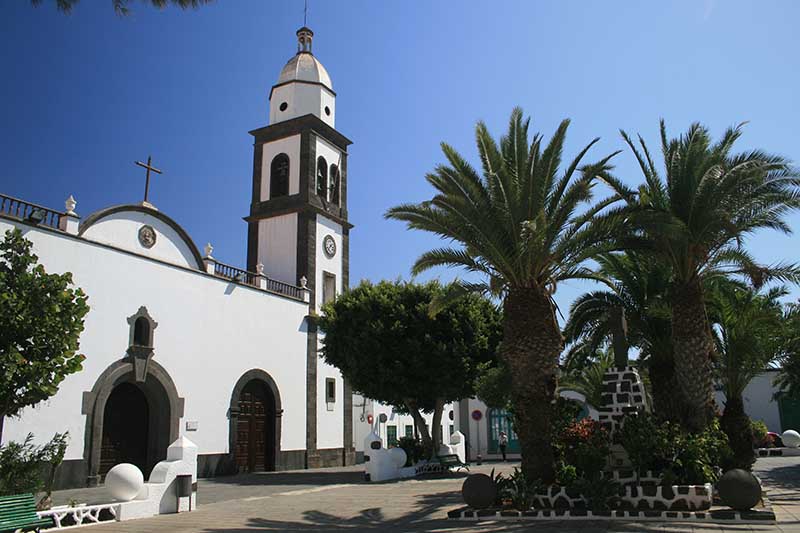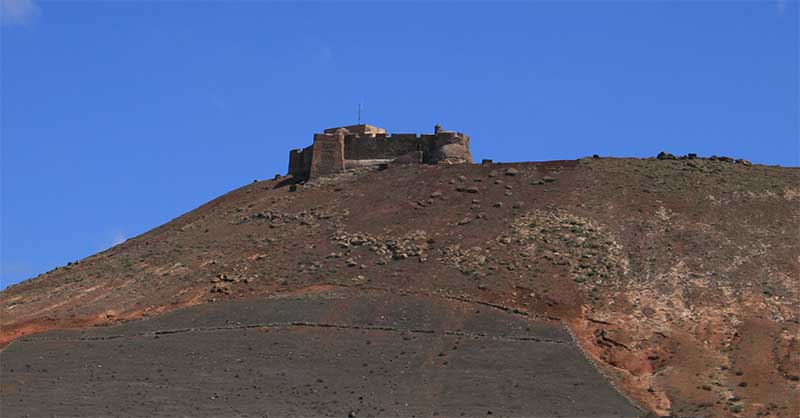Lanzarote Uk
Tourist Information Website
History
Beaches
Bank Holidays
Places Of Interest
Museums
Out And About
Accomodation
Resorts
Photo Gallery:

Lanzarote

History
The Canary Islands (Islas Canarias) are a group of seven major islands and six smaller ones
in the Atlantic, lying between 60 and 190 miles off the north western coast of Africa
(Morocco, Western Sahara) and some 700 miles from the Spanish mainland (Cadiz) The whole
archipelago extends for 310 miles from east to west and 125 miles from the north to south.
The Western islands form the province of Santa Cruz de Tenerife, chief town Santa Cruz. The
western islands are; Tenerife (794 sq. miles) La Palma ( 281 sq. miles ), Gomera (146 sq.
miles) Hierro (107 sq. miles). The Eastern islands form the province of Las Palmas de Gran
Canaria, chief town Las Palmas. The eastern islands are ; Gran Canaria (592 sq. miles)
Fuerteventura (668 sq. miles) Lanzarote (307 sq. miles). The two regions make up the
Autonomous Region of the Canary Islands with Las Palmas and Santa Cruz alternating as
capital of the region.
In geological terms the Canary Islands are quite young. The age of the eastern islands of
Lanzarote and Fuerteventura is estimated to be between 16 and 20 million years and that of
Gran Canaria between 13 and 14 million years, while the western islands are thought to have
come into being even later, Tenerife and Gomera perhaps between 8 and 12 million years ago,
La Palma and Hierro between 2 and 3 million years ago.
VOLCANIC ACTIVITY
It is well established that all the islands are of volcanic origin. There have been repeated volcanic eruptions in the Canaries, continuing into our day, the most recent have been the eruptions on La Palma in 1949 and 1971 and over that past months eruptions have taken place in El Hierro.

THE PROVINCE OF LAS PALMAS
Belongs to the Autonomous Canary Community and consists of the islands of Gran Canaria,
Lanzarote, with the island of La Graciosa and the islets of Alegranza, Montana Clara,
Roque del Este and Roque del Oeste, and Fuerteventura, with the islets of Lobos. Las
Palmas de Gran Canaria is the capital of the province and co-capital of the autonomous
region together with Santa Cruz de Tenerife, and every four years in accordance with the
Statutes of Autonomy, the Presidency of the Government transfers its seat from one city to
the other. They all form part of the "Fortunate Isles" and they receive this title because
of their permanent spring climate. There was once the hardly scientific belief that the
Canary Islands are all that remain of Atlantis, a supposedly sunken lost continent.
A more plausible thesis is that they are the continuation of the great Sahara Shield,
a broken platform now sunken in the sea, on which thick volcanic rock began to accumulate
that underwent a different later evolution.
They began to be populated in a scattered manner around the year 2,500 B.C. The Guanche
culture extended over the islands until the fifteenth century when they at last became
subject to the Castilian Crown. The islands served Columbus as a stopover point on each
one of his voyages towards the New World and the marks of discovery were engraved in the
colonial architecture, which is now proudly displayed. Earlier, the islands had suffered
the continuous attacks of Arabs, Moors, Genoese, Spanish, Portuguese and pirates, none of
whom ever established themselves. The Norman adventurer,Jean de Bethencourt, under the
patronage of the Castilian King, Enrique III, conquered some of the islands at the beginning
of the fifteenth century. As from this time, the Spanish monarchy
undertook the christianisation of the remaining islands and Alfonso de Lugo completed the
conquest in 1496.
LANZAROTE
In the years 1730 and 1824, two huge volcanic eruptions produced devastating effects on the
island. The former gave rise to the imposing massif of the Montañas de Fuego of the Parque
Nacional de Timanfaya, in the Yaiza municipality. The latter left a third of the surface
area under a sea of larva.
These extensive petrified area, a lunar landscape with the craters and black soil of La Geria,
with unwonted grape vines protected by white walls, together with the surrounding green waters
identify the island. For many, it is the most beautiful of the entire archipelago, but in
any case it is the most spectacular. If this is not enough, it is due to the local artist,
César Manrique, that nowadays no work of man clashes with the extraordinary natural
surroundings.
The capital, Arrecife, is a small city that was defended in the seventeenth century by the
castle of San Gabriel, which was constructed on an islet that is joined to the city by a
drawbridge. On highground close to the port is the Castle of San José, which was constructed
in 1779 and houses the Museo lnternacional de Arte Contemporáneo.
Although Lanzarote does possess tourist beach areas such as the Costa Teguise, Playa Blanco and
Puerto del Carmen, there are other places that are much stronger attention seekers.
The Mirador del Río allows superb views of the cliffs, the Riscos de Famara, and also of the
islands that immediately arise from the sea, La Graciosa, Montaña Clara and Alegranza.
The Jameos del Agua are galleries bored into the lava by volcanic activity, which have been
conditioned by César Manrique. The result is a natural work of art that is surprising to
the visitor.
There are several agreeable townships on the island, such as Haría, with its viewpoint that
allows views of the Mil Palmeras valley, with the Corona volcano in the background and Teguise,
the previous capital.
The Castillo de Guanapay, which was built on the edge of a volcano in the sixteenth century,
is very close to this village and it has a wonderful view.
The Cueva de los Verdes at the foot of the volcano "de La Corona" is a group of galleries
superposed on several levels that extend for some 2 kilometres, forming a fantastic spectacle.
They were used by the Guanches as refuges when attacked by pirates. The largest gallery is
currently being used as an auditorium.
Castillo de San Gabriel
This castle was built in 1573 to defend the city from pirate attacks. It is now the site of the Archaeological and Ethnographic Museum.

Castillo de San José
This fortress, dating from 1776, has a semi-squared ground plan, - the side facing the sea is curved. It houses the International Museum of Contemporary Art.

Iglesia de San Ginés
Erected in 1574, it was the first hermitage in the area. It consists of three naves with Tuscan columns and a tower with a rectangular base.

HARIA
Cueva de los Verdes
This makes up part of the same Volcanic tube as the Jameos del Agua, a tunnel formed by the action of incandescent lava. The people of the island took refuge in this grotto to escape the many pirate raids.
Jameos del Agua
They form the end of the vulcanic tube which joins the sea to the cave of the Greens and the Corona mountain. In their interior is a tiny lake inhabited by an almost sightless white crab, a unique native species. This extraordinary place created by nature has been used by man to house a tourist centre that conserves all the magic and colour of the island. It has a natural auditorium with perfect acoustics.

Mirador del Rio
Here can be found a tourist centre which is perfectly integrated into its nature setting and is a model of ecological architecture. It was built in 1974 on a cliff 475 metres above sea level, and from its enormous windows or from the terrace which overhangs the precipice visitors can contemplate the magnificent views of the Famara cliffs and the Graciosa, Montaña Clara and Alegranza islands.
TEGUISE
Castilio de Santa Barbara
It was originally a lookout tower which was enlarged in 1551 with strong stone walls. Located on the Guanapay volcano, it Is now the site of the Museum of the Canary Isles Emigrant.

Convento de San Francisco
This convent, dating from the end of the 16th century, is outstanding for its tall and slender tower and the stonework of the facade.
Iglesia de Nuestra Señora de Guadalupe
A church of one simple nave with a beautiful coffered ceiling.

Palacio Spínola
A majestic Lanzarote stately home built between 1730 and 1780 and restored in 1974.
TINAJO
Ermita de la Virgen de los Dolores
In 1736, when volcanic eruptions threatened to bury their village, the inhabitants made a procession with a statue of the Lady of Sorrows and promised to build a hermitage if the Virgin stopped the advance of the lava. The miracle took place, but it was not until 1774 that the hermitage was built under the patronage of the virgin, also known as the Lady of the Volcanos.
Iglesia de San Roque
Among the statues in the interior is a magnificent Virgin de la Candelaria and a Christ attributed to Luján Pérez.
YAIZA
Iglesia de Nuestra Señora de los Remedios
Constructed in 1670, its interior contains various sculptures of the Virgin which gives it its name.
Gastronomy
There is sufficient documentation in existence to support the fact that the Canary Islands was the first place in the Old World where the American tubercle was grown and eaten, the "papa ". The traveller should know that "papas arrugós" and "papas peludos" refer to small potatoes boiled and served in their jackets, and that "papas guisadas" refer to peeled potatoes. "Papas" together with "gofio", roasted corn meal, are the companion to many Canary Islands dishes, which is being taken into account more and more by the most gourmets with each passing day. Nor can we forget a wide variety of green stews and broth, made with watercress, hedge mustard and green vegetables. Sauces such as "mojo picón" (a spicy sauce made from pepper, oil and vinegar) and "mojo verde" (a sauce made from coriander, parsley, oil and vinegar) "Sancocho" (parboiled meat). Fish such as the "vieja", "sama", wreck fish and sea bass etc. Meat such as veal, young goat, suckling pig and goat. Tropical fruit. "Queso majorero" (a goat's milk cheese) from Fuerteventura. Malvasia wine (sweet dessert wine) from Lanzarote.
Local Specialities
Try a few of the local delicacies whilst you're here to get a true taste of Lanzarote and the Canaries.
Potaje or Puchero Canario
This is a type of stew made from chick peas, maize, meat, lentils and garlic.
Papas arrugadas
New potatoes boiled in seawater until wrinkled and encrusted in salt.
Mojo picón
A Canarian sauce made from garlic, chilli, vinegar, and paprika. Normally served with papas arrugadas.
Conejo
Rabbit cooked in garlic with a spicy sauce. Rabbit and goat are the traditional meats eaten on the island.
Gofio
A maize powder served with soups to thicken or made into fudge known for its aphrodisiac qualities.
Empanadillas
Small pastries filled with various fillings normally tuna fish.
Tortilla
A typical Spanish omelette filled with potatoes.
Sama
This is a large fish with a tasty white flesh, normally served with papas arrugadas and salad.
El grifo wine
An award winning sweet wine available throughout the island.
The information contained above is accurate at the time of uploading should ammendments need to take place, then this will be carried out on the next upload.
Airport
Animal Lovers
Automobile Dealers
Banks
Bars
Boats
Car Rentals
Charities
Computers
Cycles
Disability
Diving
Education
Electrical
Estate Agent
Excursions
Golf
Health
Jewellers
Mobile Telephone
Opticians
Perfumeries
Photographers
Printing Needs
Religion
Restaurants
Sports
Tattoos
Theme Parks
Tour Operators
Transports
Travel Agents
Utilities
